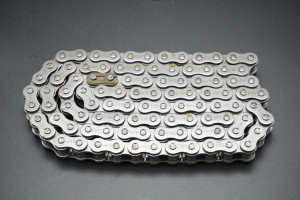Roller chains play a vital role in various industries including automotive, agriculture and manufacturing. They transmit power and movement efficiently, making them a widely used mechanism. Among the different types of roller chains, endless roller chains are particularly popular for their seamless and uninterrupted design, which ensures smooth operation and increases efficiency. In this blog, we will guide you through the manufacturing process of endless roller chains, providing valuable insights into the manufacturing process. So, let’s get started!
Step 1: Choose the right material
To manufacture a high-quality endless roller chain, the first step is to gather the required materials. Chains need to be strong, durable, and able to withstand tremendous pressure and tension. Typically, stainless steel or carbon steel is used to make roller chains. These materials have excellent strength and corrosion resistance, ensuring the chain’s longevity.
Step 2: Cut Components to Size
After sourcing the materials, the next step is to cut them to the desired size. Using a precision cutting tool such as a saw or grinder, the individual components of the roller chain, including outer and inner plates, pins and rollers, are formed to the desired length and width. Attention to detail and accuracy during this step are essential to ensure the chain is functioning properly.
Step 3: Assemble the Rollers and Pins
Rollers and pins are the basic elements of a roller chain. During assembly, the roller sits between the inner plates while pins pass through the roller, holding it in place. Care must be taken to ensure that the rollers can rotate smoothly and that the pins fit securely within the chain.
Step 4: Install the Outer Panel
When the rollers and pins are in place, the outer plates are joined, enclosing the rollers and forming a link. Proper alignment is critical to ensuring the chain runs smoothly with minimal friction. The outer plate is usually riveted or welded to the inner plate, depending on the design and intended application of the roller chain.
Step 5: Heat Treatment and Surface Treatment
To enhance the strength and durability of endless roller chains, heat treatment is often performed. The process involves exposing the chain to high temperatures followed by controlled cooling. Heat treatment improves the wear resistance and fatigue resistance of the chain, prolonging its service life. Additionally, surface treatment techniques such as polishing or coatings can be applied to reduce friction and improve corrosion resistance.
Step 6: Quality Control and Testing
Thorough quality control measures must be taken before endless roller chains are ready for use. Chains must undergo rigorous testing to ensure they meet the required standards for load capacity, tensile strength and overall performance. In addition, the alignment, flexibility and noise level of the chain should be evaluated for smooth operation.
Manufacturing endless roller chains requires precision, attention to detail and adherence to strict quality control procedures. By following the steps above, you can create a high-quality chain that meets the needs of your specific industry. Remember, the proper functioning of a chain is critical to the efficient transmission of power and motion in countless applications. So whether you are in the automotive, agricultural or manufacturing sectors, mastering the manufacturing of endless roller chains is a valuable skill that can benefit your operation.
Post time: Jul-24-2023

